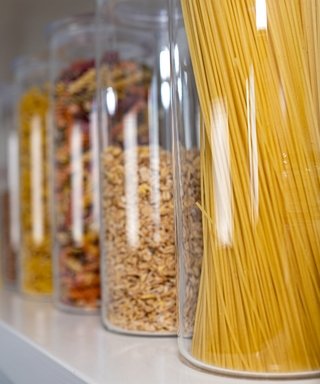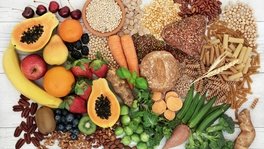The latest Waitrose Food & Drink Report 2025-26 highlights a major behaviour shift: consumers are increasingly trading up on the everyday. Pantry staples - from oils and butters to pasta, sauces and seasonings - are no longer just functional. They have become small luxuries that signal taste, care and confidence in the kitchen.
Consumers are not simply buying ingredients; they are curating their home-cooking experience. A beautifully sourced olive oil or well-crafted passata can elevate an ordinary meal without the cost of a full indulgence moment, and this is reshaping expectations across the category.
What This Means for Brands
1. Packaging must earn its place on the countertop
Kitchens are increasingly curated, and shoppers are leaving out products on the kitchen side that feel premium, design-led and trustworthy. We are already seeing UK brands set the benchmark here.
• Belazu’s vibrant yet refined jars look at home next to the hob, signalling quality through colour, glass and craft cues.
• Stokes Sauces take a different approach, using thick glass, bold typography and heritage-inspired design that feels substantial and credible.
• Bold Bean has recently undergone a rebrand - elegant jars with minimalist typography and provenance storytelling. These beans have become a social-media status symbol for home cooks.
• Meanwhile, Peters Yard shows how even everyday items like crackers can be elevated, with matte finishes, soft colour palettes and minimal photography that make the products feel kitchen-worthy rather than cupboard-bound.
The takeaway is simple: if a pantry staple is going to sit proudly beside the cooker, its packaging needs to look the part - considered, confident and visually distinctive.
2. Storytelling has to go deeper
Premiumisation only works when the product has genuine substance behind it. Today’s consumer wants to understand how an ingredient is made, where it comes from and why it is different. Provenance, process and people matter, and clear, honest storytelling builds the trust needed to justify a trade-up.
3. Hero ingredients are the new differentiators
As consumers pay closer attention to what goes into their food, the ingredient itself becomes the star. When brands highlight what makes their central ingredient unique - flavour notes, texture, origin or craft - the product shifts from a routine purchase to a meaningful choice.
Avoiding the Gimmick Trap
With premium cues everywhere, brands risk chasing fancy instead of authentic.
Consumers quickly spot superficial claims or over-polished language. The real winners will be those who anchor premiumisation in genuine quality - flavour, sourcing, transparency and integrity - rather than gloss.
What This Means for Comms Teams
For brand and comms teams, this trend is a prompt to rethink positioning. What is your hero ingredient? Is your provenance story genuinely compelling? Does your visual identity match your value? And how can your product fit the elevated everyday moments consumers now prioritise - hosting, gifting, grazing and day-to-day cooking?
The Waitrose report makes one thing clear: the pantry is centre stage. Brands that embrace craft, clarity and ingredient-led storytelling will be the ones that resonate in 2026 and beyond.
If you are exploring how your hero ingredient could shape your narrative for the year ahead, we would love to chat.






